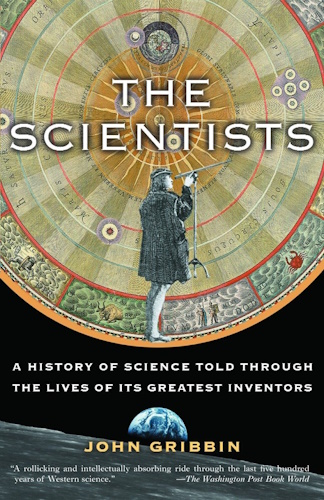

The Scientists: A History of Science Told Through the Lives of Its Greatest Inventors

From the Inside Flap
A wonderfully readable account of scientifi c development over the past fi ve hundred years, focusing on the lives and achievements of individual scientists, by the bestselling author of In Search of Schrodinger's Cat.
In this ambitious new book, John Gribbin tells the stories of the people who have made science, and of the times in which they lived and worked. He begins with Copernicus, during the Renaissance, when science replaced mysticism as a means of explaining the workings of the world, and he continues through the centuries, creating an unbroken genealogy of not only the greatest but also the more obscure names of Western science, a dot-to-dot line linking amateur to genius, and accidental discovery to brilliant deduction.
By focusing on the scientists themselves, Gribbin has written an anecdotal narrative enlivened with stories of personal drama, success and failure. A bestselling science writer with an international reputation, Gribbin is among the few authors who could even attempt a work of this magnitude. Praised as "a sequence of witty, information-packed tales" and "a terrifi c read" by The Times upon its recent British publication, The Scientists breathes new life into such venerable icons as Galileo, Isaac Newton, Albert Einstein and Linus Pauling, as well as lesser lights whose stories have been undeservedly neglected. Filled with pioneers, visionaries, eccentrics and madmen, this is the history of science as it has never been told before.
Paperback: 646 pages
Publisher: Random House Trade Paperbacks; 7.11.2004 edition edition (August 10, 2004)
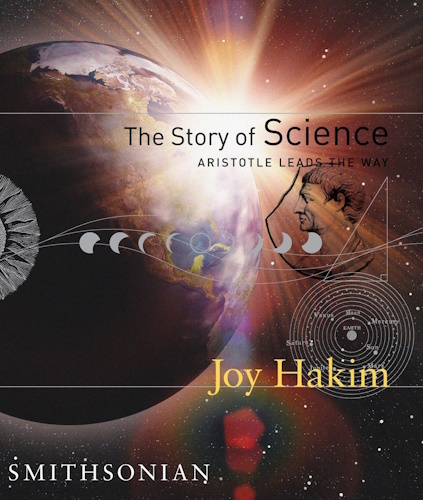

The Story of Science: Aristotle Leads the Way

Readers will travel back in time to ancient Babylonia, Egypt, and Greece. They will meet the world's first astronomers, mathematicians, and physicists and explore the lives and ideas of such famous people as Pythagoras, Archimedes, Brahmagupta, al-Khwarizmi, Fibonacci, Ptolemy, St. Augustine, and St. Thomas Aquinas. Hakim will introduce them to Aristotle—one of the greatest philosophers of all time—whose scientific ideas dominated much of the world for eighteen centuries.
In the three-book The Story of Science series, master storyteller Joy Hakim narrates the evolution of scientific thought from ancient times to the present. With lively, character-driven narrative, Hakim spotlights the achievements of some of the world's greatest scientists and encourages a similiar spirit of inquiry in readers. The books include hundreds of color photographs, charts, maps, and diagrams; informative sidebars; suggestions for further reading; and excerpts from the writings of great scientists.
Series: The Story of Science (Book 1)
Hardcover: 256 pages
Publisher: Smithsonian Books; First Edition edition (May 2004)


Science and Technology in World History: An Introduction

"Science has become so identified with practical benefits that the dependence of technology on science is commonly assumed to be a timeless relationship and a single enterprise... That belief, however, is an artifact of twentieth-century cultural attitudes superimposed without warrant on the historical record." -- from Science and Technology in World History: An Introduction
In modern industrial society, the tie between science and technology seems clear, even inevitable. But historically, as James E. McClellan III and Harold Dorn remind us, the connection has been far less apparent. For much of human history, technology depended more on the innovation of skilled artisans than it did on the speculation of scientists. Technology as "applied science," the authors argue, emerged relatively recently, as industry and governments began funding scientific research that would lead directly to new or improved technologies. In Science and Technology in World History, McClellan and Dorn offer an introduction to this changing relationship.
McClellan and Dorn review the historical record beginning with the thinking and tool making of prehistoric humans. Neolithic people, for example, developed metallurgy of a sort, using naturally occurring raw copper, and kept systematic records of the moon's phases. Neolithic craftsmen possessed practical knowledge of the behavior of clay, fire, and other elements of their environment, but though they may have had explanations for the phenomena of their crafts, they toiled without any systematic science of materials or the self-conscious application of theory to practice.
McClellan and Dorn identify two great scientific traditions: the useful sciences, patronized by the state from the dawn of civilization, and scientific theorizing, initiated by the ancient Greeks. Theirs is a survey of the historical twists and turns of these traditions, leading to the science of our own day.
Without neglecting important figures of Western science such as Newton and Einstein, the authors demonstrate the great achievements of non-Western cultures. They remind us that scientific traditions took root in China, India, and Central and South America, as well as in a series of Near Eastern empires, during late antiquity and the Middle Ages, including the vast region that formed the Islamic conquest. From this comparative perspective, the authors explore the emergence of Europe as a scientific and technological power. Continuing their narrative through the Manhattan Project, NASA, and modern medical research, the authors weave the converging histories of science and technology into an integrated, perceptive, and highly readable narrative.
Paperback: 416 pages
Publisher: The Johns Hopkins University Press; 1 edition (March 4, 1999)
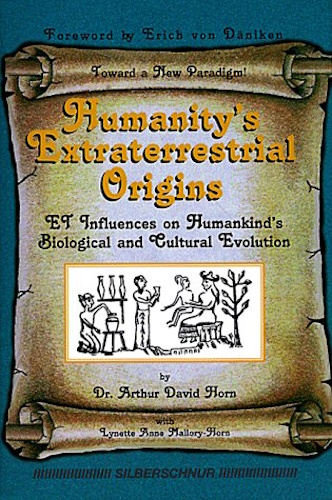

Humanity's Extraterrestrial Origins: Et Influences on Humankind's Biological and Cultural Evolution

No details.
Paperback: 373 pages
Publisher: Silberschnur; 2nd Printing edition (1997)


Exopolitics: Political Implications of Extraterrestrial Presence

According to Dr. Michael Salla and many other experts in the field of ET research, for almost 70 years the US government has engaged in an extensive "official effort" of disinformation, intimidation and tampering with evidence in order to maintain a non-disclosure policy about extraterrestrial presence. Writes Dr. Salla: "Ever since I began to publish the early versions of the chapters in this book in January 2003 as "Study Papers" on my website, https://www.exopolitics.org, I have received a consistent stream of supportive letters encouraging my research, and unsolicited information from former government, military, intelligence employees confirming many of my hypotheses. This has given me hope that eventually full disclosure of the extraterrestrial presence on the planet will occur, since interest is high and so much information is now in the public arena. States Jim Marrs, author of Rule by Secrecy and Alien Agenda: "Michael Salla presents an astounding and eye-brow raising alterative history of the past 100 years. He postulates that since at least the 1930s every major war and policy decision has been in response to an undisclosed extraterrestrial presence on Earth.
Paperback: 326 pages
Publisher: Dandelion Books, LLC (February 2004)
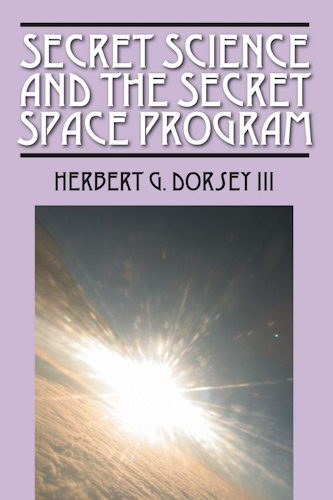

Secret Science and the Secret Space Program

There are areas of science that are off limits to the public and are not taught in our universities. The science and technology of anti-gravity and extracting energy from space itself was developed in the late 19th and early 20th century by scientists and experimenters like John Worrell Keely, Nicola Tesla, and Thomas Townsend Brown. But today, this science is purposely overlooked and regulated to the world of "Black Projects." The publicly acknowledged space program is but a "smoke screen" to hide a secret space program, overseen by NSA, the CIA and a secret branch of the U.N., that is so secret that even some U.S. Presidents and Congressional oversight committees are not even aware of it. Secret Science and the Secret Space Program will document and provide an in depth look at this secret science and technology and the secret space program that has already colonized Mars, built bases on our Moon and other planet's moons and given us the ability to travel to the stars. "Black" science is so far ahead of acknowledged science that this book will seem like science fiction to many who read it.
About the Author
Herbert G. Dorsey III received a degree in Electrical Engineering from University of California at Santa Barbara in 1982. In 1985, he became acquainted with the ideas of Thomas Bearden and John Bedini which allowed for free energy generation but ran counter to his formal schooling. Herbert Dorsey realized that there were holes in the formal science that he was taught and resolved to become a free energy researcher. Along the way, he also discovered the science of anti-gravity. In the 1990s, he attended many UFO conferences and met many interesting people that worked on secret government projects and was amazed at what he learned from them. Now, he wishes to share that knowledge with you.
Paperback: 212 pages
Publisher: Herbert Grove Dorsey III (November 12, 2014)
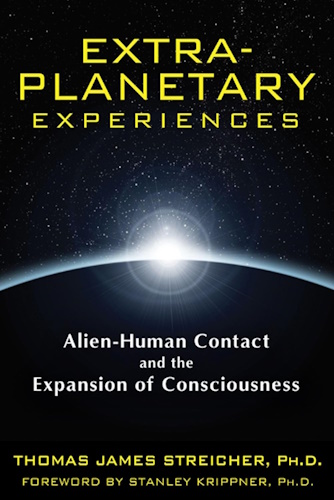

Extra-Planetary Experiences: Alien-Human Contact and the Expansion of Consciousness

From the Back Cover
UFOS / SPIRITUALITY
“Thomas Streicher breaks new ground in investigating the chronically controversial topic of alien-human contact.” --Dean Radin, Ph.D., senior scientist at the Institute of Noetic Sciences
Since prehistoric times all cultures report encounters with strange beings and crafts from the sky as well as stories of extra-planetary experiences--that is, travel to other planets, moons, and stars. In the case of modern accounts, these benevolent alien-human interactions bear striking resemblance to one another, even among people with no knowledge of other alien-human claims. And all experiences marked a spiritual turning point in the person’s life, providing a loss of the fear of death, enhanced spiritual insights, a connection to cosmic consciousness, or increased motivation to be of service to humanity.
Exploring fresh dimensions of ET contact and extra-planetary experience (XPE) using Harvard professor and researcher John Mack’s witnessing approach to paranormal incidents, Thomas Streicher interviews 7 renowned people who have experienced XPE--including astronaut Edgar Mitchell, Norma Milanovich, and Stanford-tested remote viewer Ingo Swann--and shares the positive spiritual effects of XPE on their lives. Placing their experiences in the context of historical accounts of alien-human encounters from ancient Sumerian, Vedic, Egyptian, Tibetan, Hopi, Dogon, and biblical records as well as 19th- and 20th-century testimonies from Orfeo Angelucci, Billy Meier, Elizabeth Klarer, and others, the author reveals the similarities of these experiences with those of his interviewees. Streicher shows these experiences are not contrived hallucinations but genuine transformative spiritual awakenings akin to near-death and out-of-body experiences.
THOMAS JAMES STREICHER, Ph.D., a student of John Edward Mack, M.D., earned his doctorate in psychology from Saybrook University. The founder and director of Divine Spark, a non-profit dedicated to helping people through free meals and other means to activate the divine spark within each of them, he lives in Nevada City, California.
Paperback: 288 pages
Publisher: Bear & Company (March 19, 2012)
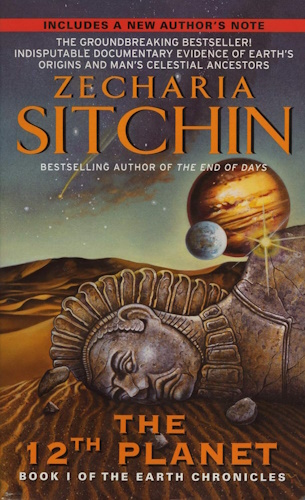

Twelfth Planet: Book I of the Earth Chronicles (The Earth Chronicles)

Over the years, startling evidence has been uncovered, challenging established notions of the origins of life on Earth—evidence that suggests the existence of an advanced group of extraterrestrials who once inhabited our world.
The first book of the revolutionary Earth Chronicles series offers indisputable documentary evidence of the existence of the mysterious planet Nibiru and tells why its astronauts came to Earth eons ago to fashion mankind in their image.
The product of more than thirty years of meticulous research, The 12th Planet treats as fact, not myth, the tales of Creation, the Deluge, the Tower of Babel, and the Nefilim who married the daughters of man. By weaving together the biblical narrative with Sumerian and Babylonian clay-tablet texts, it challenges the established notions of the origins of Earth and mankind, and offers a compelling alternative history and prehistory of both.
About the Author
Zecharia Sitchin is an internationally acclaimed author and researcher whose books offer evidence that we are not alone in our own solar system. One of a handful of scholars able to read the Sumerian cuneiform tablets, he has combined archaeology, ancient texts, and the Bible with the latest scientific discoveries to retell the history and prehistory of mankind and planet Earth. His trailblazing books have been translated into more than twenty languages; his first one, an oft-quoted classic, celebrates the thirtieth anniversary of its publication. A graduate of the University of London and a journalist and editor in Israel for many years, he now lives and writes in New York.
Paperback: 464 pages
Publisher: Harper; Reprint edition (March 27, 2007)


The Roots of War and Domination

Domination behavior, using force to control others, is destabilizing and disruptive in families, groups and communities. At the international level, aggressive domination is war the breakdown of the civilized order. Dr. Metzner tracks the roots of war and domination: in the psychological consequences of violent child abuse; in historical and prehistorical patterns of resource competition; and in mammalian predator behavior gone awry. One can see these ancient predatory patterns operating in the capitalist and imperialist policies of nation states. Seeking still deeper roots, he explores lesser known mythological and esoteric teachings: the Buddhist myths of power-addicted demons; the legend of the corruption of the Atlantean civilization; the Nordic myths of wars among the gods; and the Sumerian myths of dominating extra-terrestrial war-lord colonizers who genetically engineered our human ancestors. Finally, he examines the complex and profound teachings of the mysterious 20th century sage G.I. Gurdjieff, who located the ultimate causes of war in the extra-planetary environment and cosmic history. It is the author s intention and hope that these explorations of this most intractable of humanity s problems may lead others to further discoveries and possible solutions.
About the Author
Ralph Metzner, Ph.D. is a recognized pioneer in studies of consciousness and its transformations. He is a psychotherapist and Professor Emeritus at the California Institute of Integral Studies, where he was also the Academic Dean for ten years in the 1980s. He collaborated with Timothy Leary and Richard Alpert in the studies of psychedelic drugs at Harvard in the 1960s, and co-authored The Psychedelic Experience. His books include Maps of Consciousness, The Well of Remembrance, The Unfolding Self and Green Psychology; as well as two edited collections on the science and phenomenology of ayahuasca and the psilocybin mushrooms. He is founder and president of the Green Earth Foundation, an ecological educational organization, and teaches a training program in Alchemical Divination.
Paperback: 92 pages
Publisher: Regent Press (March 15, 2008)


Genes and DNA (Kingfisher Knowledge)

Genes & DNA explores modern genetics, from an investigation of genes and their function, to forensics, therapy, and cloning.
About the Author
Steve Jones is professor of genetics and head of the prestigious Galton Laboratory, University College of London. Jones has previously written three trade books, with two published in the U.S.: DARWIN'S GHOST and THE LANGUAGE OF GENES. A geneticist whose specialty is snails (he did some of the most important early sex-differentiation work by studying their shells), Jones has regularly appeared as one of the top authors on THE TIMES's bestseller lists. His witty and often humorous writing compares with - and in some cases, surpasses - that of Richard Dawkins, Stephen Jay Gould, Edward O. Wilson, Jared Diamond, and Steven Pinker. His books have received outstanding reviews in the United States as well as Britain.
Series: Kingfisher Knowledge
Hardcover: 63 pages
Publisher: Kingfisher (October 24, 2003)
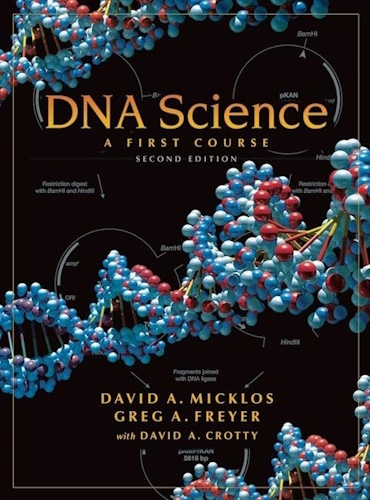

DNA Science: A First Course, Second Edition

This is the second edition of a highly successful textbook (over 50,000 copies sold) in which a highly illustrated, narrative text is combined with easytouse thoroughly reliable laboratory protocols. It contains a fully uptodate collection of 12 rigorously tested and reliable lab experiments in molecular biology, developed at the internationally renowned Dolan DNA Learning Center of Cold Spring Harbor Laboratory, which culminate in the construction and cloning of a recombinant DNA molecule. Proven through more than 10 years of teaching at research and nonresearch colleges and universities, junior colleges, community colleges, and advanced biology programs in high school, this book has been successfully integrated into introductory biology, general biology, genetics, microbiology, cell biology, molecular genetics, and molecular biology courses. The first eight chapters have been completely revised, extensively rewritten, and updated. The new coverage extends to the completion of the draft sequence of the human genome and the enormous impact these and other sequence data are having on medicine, research, and our view of human evolution. All sections on the concepts and techniques of molecular biology have been updated to reflect the current state of laboratory research.
The laboratory experiments cover basic techniques of gene isolation and analysis, honed by over 10 years of classroom use to be thoroughly reliable, even in the hands of teachers and students with no prior experience. Extensive prelab notes at the beginning of each experiment explain how to schedule and prepare, while flow charts and icons make the protocols easy to follow. As in the first edition of this book, the laboratory course is completely supported by qualityassured products from the Carolina Biological Supply Company, from bulk reagents, to useable reagent systems, to singleuse kits, thus satisfying a broad range of teaching applications.
Series: DNA Science: A First Course 2nd Edition
Paperback: 592 pages
Publisher: Cold Spring Harbor Laboratory Press; Second edition (January 13, 2003)


Wholeness and the Implicate Order (Volume 135)

David Bohm was one of the foremost scientific thinkers and philosophers of our time. Although deeply influenced by Einstein, he was also, more unusually for a scientist, inspired by mysticism. Indeed, in the 1970s and 1980s he made contact with both J. Krishnamurti and the Dalai Lama whose teachings helped shape his work. In both science and philosophy, Bohm's main concern was with understanding the nature of reality in general and of consciousness in particular. In this classic work he develops a theory of quantum physics which treats the totality of existence as an unbroken whole. Writing clearly and without technical jargon, he makes complex ideas accessible to anyone interested in the nature of reality.
About the Author
David Bohm (1917-92). Renowned physicist and theorist who was one of the most original thinkers of the second half of the twentieth century.
Paperback: 284 pages
Publisher: Routledge; 1 edition (November 17, 2002)
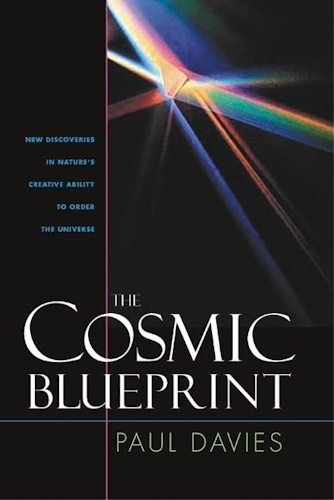

The Cosmic Blueprint: New Discoveries In Natures Ability To Order Universe

In this critically acclaimed book, first published in 1988 and now reprinted in paperback, scientist and author Paul Davies explains how recent scientific advances are transforming our understanding of the emergence of complexity and organization in the universe.
Melding a variety of ideas and disciplines from biology, fundamental physics, computer science, mathematics, genetics, and neurology, Davies presents his provocative theory on the source of the universe's creative potency. He explores the new paradigm (replacing the centuries-old Newtonian view of the universe) that recognizes the collective and holistic properties of physical systems and the power of self-organization. He casts the laws in physics in the role of a "blueprint," embodying a grand cosmic scheme that progressively unfolds as the universe develops.
Challenging the viewpoint that the physical universe is a meaningless collection particles, he finds overwhelming evidence for an underlying purpose: "Science may explain all the processes whereby the universe evolves its own destiny, but that still leaves room for there to be a meaning behind existence."
About the Author
Paul Davies is professor of natural philosophy in the Australian Centre for Astrobiology at Macquarie University. His research has spanned the fields of cosmology, gravitation, and quantum field theory, with particular emphasis on black holes and the origin of the universe. He is currently working on the problem of the origin of life and the search for life on Mars. He is a well-known author, broadcaster, and public lecturer and has written over twenty-five books. Among his better-known works are God and the New Physics, The Mind of God, About Time, The Fifth Miracle, and How to Build a Time Machine. In recognition of his work as an author, he was elected as fellow of The Royal Society of Literature in 1999.
His contributions to science have been recognized by numerous awards, including the 2002 Michael Faraday Prize by the Royal Society and the 2001 Kelvin Medal and Prize from the U.K. Institute of Physics. In April 1999 the asteroid 1992 OG was officially named (6870) Pauldavies in his honor. His most significant award was the 1995 Templeton Prize for Progress in Religion, the world’s largest prize for intellectual endeavor.
Paperback: 232 pages
Publisher: Templeton Press (April 28, 2004)
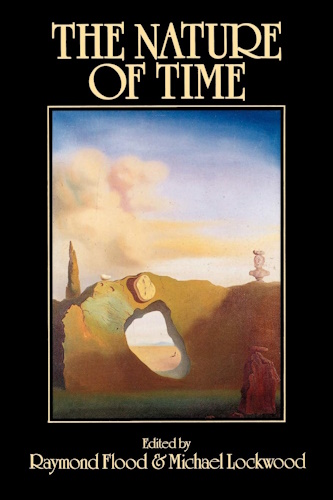

From the Back Cover
Why does time appear to run in only one direction? We remember the past- but why not the future? We can influence the future- but could we, even theoretically, influence the past?
Generations of philosophers and theologians, physicists and mathematicians have puzzles and speculated about these and the many other questions that surround the concept of time. Recent scientific work is said to explain the directionality of time. But time still contains many mysteries- black holes and big bangs, asymmetries and relativities, arrows and loops - that will doubtless continue to occupy us for centuries to come.
In this impressive collection of original articles ten internationally known scholars explore and explains the nature of time, apace and now space-time. Founded on the latest developments in thermodynamics, quantum theory and cosmology, their ideas will fascinate anyone interested in Einstein's theory of relativity.
Paperback: 196 pages
Publisher: Wiley-Blackwell (January 8, 1991)


Fraser's engaging book presents a discussion of clocks, calendars used throughout history, and time in various cultures. The unifying theme is the difference between pyschological time and time in modern physics. Science rejects the concept of time as always having the dimensions of past, present, and futureEinstein suggested objects exist in four-dimensional "spacetime." The author's skill prevents the reader from becoming lost in advanced physics, but on occasion he slips: the solution to Zeno's paradoxes does not work; and Marx did not say time was entirely a social convention. But this is a delightful book. David Gordon, Bowling Green State Univ., Ohio Copyright 1987 Reed Business Information, Inc.
Hardcover: 408 pages
Publisher: University of Massachusetts Press; First edition (November 12, 1987)
![]()
![]()